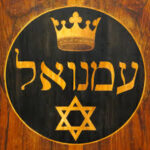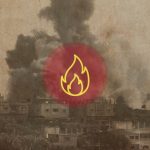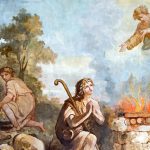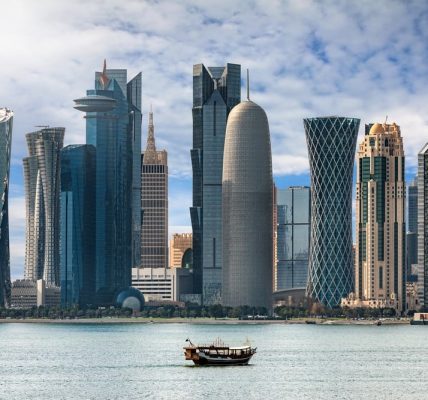
Exploring the rich tapestry of biblical symbolism provides insight into the many layers of meaning attributed to nature in the Hebrew Bible. Among these, the acacia tree stands out for its resilience and beauty, and the Sodom apple TapuichSdomfor its deceptive beauty. Although it is not directly mentioned in Psalm 1 or Jeremiah 17, many scholars, such as Ray Vander Laan, believe that the acacia is the tree that symbolizes the one who bears fruit. It is probable that the tree cursed in Jeremiahthe one who trusts in manis the Sodom apple (you will see why later). By understanding the characteristics of the acacia and Sodom apple and the themes of these passages, we can find insights that underscore the spiritual and moral lessons the authors sought to convey.
Understanding the Acacia Tree and the Desert
The acacia tree, a symbol of endurance and resilience, thrives in arid environments like Israels deserts, showcasing its ability to sustain life in harsh conditions. Its wood is durable and resistant to decay. Its no wonder that God commanded Moses to use acacia wood in constructing the Ark of the Covenant. The ecological imagery that the psalmists use comes from the desert. Psalm 23s still waters are safe compared to the dangerous flash floods that could sweep away and unwise sheep drinking from a riverbed. The slimy pit and mud and mire of Psalm 40 resemble a lamb stuck in the mud that these flash floods create. God puts his feet on a rock and give him a firm place to stand. The image is of a shepherd rescuing a sheep.
Psalm 1 Tree, not an Oak
We often view the Psalm 1 tree as a mighty oak or maple on the lush bank of a great river. However, the psalmist lived in a desert. Psalm 1 contrasts the ways of the righteous and the wicked, using the metaphor of a tree planted by streams of water to describe a person who delights in the Torahlaw of the Lord. They bear fruit in season, enjoying prosperity in all they do. While the scripture does not specify the acacia, the trees characteristics resonate with the qualities found in her.
1.As mentioned, acacia was used to build the Ark of the Covenant. Acacia wood is solid. Bedouins use it to build fires because it burns much longer than logs from other trees. The man or woman of God burns bright and endures over time, even in harsh circumstances, like the desert. The desert father Abba Arsenios would go so deep with his prayer that a brother, looking through the window of his cell [room of a monk], saw the old man as if he were a single flame of fire. As Abba Joseph, another desert monk, said, If you really want, you can become all flame.[1]
2.The acacia can survive for a decade without water and grows in thewadis(riverbeds) of the desert.The extreme southern Negev, near the Red Sea, is so arid that it can receive less than 1 inch of rain annually. When the rainwater comes down from the mountains of Judah towards the desert, it creates flash floods, which play a crucial role in the survival strategies for species like the acacia. She can absorb large amounts of water quickly and store it as needed. The believer absorbs spiritual water from the Word of God and stores it his or her soul. David said, I have hidden your word in my heartthat I might not sin against you (Ps. 119:11). We can draw from this reservoir during our time of need to find strength.
3.The Acacias ability to flourish in the challenging desert environment mirrors the psalmists depiction of a righteous person who thrives through challenging times by walking according to his word.
4.One kilo of acacia pods can sustain a camel for a week! It reminds me of the cake given to Elijah by the angel. It gave him fuel for forty days.
5.The acacia has an umbrella-shaped top that gives shade to humans and animals in the hot desert.
“A generous person will prosper;
whoever refreshes others will be refreshed”

An acacia tree in a wadi (dry riverbed).(Photo: Wikipedia)
Jeremiah 17s Trees
Jeremiah 17 delves into the hearts condition, contrasting those who trust in human strength with those who trust in the Lord. Verses 7-8 liken those who trust in the Lord to a tree planted by water, sending out its roots by the stream, not fearing when heat comes, and whose leaves remain green; it is not anxious in the year of drought, for it does not cease to bear fruit. This imagery of resilience and unwavering faith under adversity aligns with the Acacia tree’s natural traits. The Acacias capacity to withstand drought and still produce life-sustaining resources echoes the spiritual resilience and fruitful existence promised to those who place their trust in divine guidance.
The Cursed Tree
But the tree that is cursed is the Sodom apple, according to renowned Israeli botanist Noga Hareuveni, whom Vander Laan claims was the world’s greatest authority on biblical plants. In Hebrew, there is a play on words. The word for cursed as in Cursed is the man who trusts in man, (v. 5) is arur. The word for shrub in v. 6, he is like a shrub of the desert, is arar. However, Vander Laan is incorrect in saying that the root is the same.[2]Nevertheless, Jeremiah, who is known for his word plays, is connecting these two wordsarar and arur.

A Sodom Apple deceptively appears to be an actual fruit.
(Photo: RachidH on Flickr)
The Sodom apple appears lush and green on the outside. It even has large fruits. Just as the temptation to put our trust in this world can come with feelings of security. But inside the fruit is a poison. Augustine wrote, When they are bitten or squeezed, the skin bursts in pieces, and they vanish in smoke and ashes (The City of God, XXI.4).The ancients avoided the sap. It is corrosive and more poisonous than strychnine. It will literally stop your heart.[3]Josephus wrote, Still, too, may one see ashes reproduced in the fruits, which from their outward appearance would be thought edible, but on being plucked with the hand dissolve into smoke and ashes (WarIV.484-485). For good reason, Jeremiah chose the acacia and the Sodom apple to describe the cursed and blessed man.

The fruit of the Sodom Apple, after drying up and opening up. Seen here are the seeds and the dried-up peel.(Photo: Ben Slevich via Wikipedia)
Desert Mothers and Fathers
Both of these trees can be found in the wadis (the dry riverbeds) of the Israeli and Egyptian deserts, where the desert fathers and mothers came in the third and fourth centuries to escape the worldliness of the cities. They fled to the desert to find God by giving themselves wholly to him (there were accesses). They fought and overcame temptation like Yeshua did; in the desert (Matt. 4). The mystery of the desert is discovered in this world below when we realize that the demons fight hardest when God is near; the darkness of the shadow is in direct proportion to the brilliance of the light.[4]
The imprint of God on your life does not come easy or quicklyit doesnt end after walking down an aisle at a congregation and saying a prayer. It is a journey, a marathonnot a sprint. If you look at the smooth stones and beautiful natural artwork that stains the wadis walls, you must understand that such beauty was formed over millennia of winds and floods, with God himself as the artist. One doesnt develop a massive root system that can withstand the rushing waters or intense desert heat overnight but over a lifetime.
The Sodom Apple has fake fruit; in fact, it is poisonous. Many look like good trees and appear to have fruit, but they walk in the counsel of the wicked (Psalm 1:1). We want to be like the healthy acacia: In all that he does, he prospers (v. 3).
[1]John Chryssavgis, In the Heart of the Desert: The Spirituality of the Desert Fathers and Mothers (Bloomington, IN: World Wisdom, 2008), Foreword, Kindle Edition.
[2]The alephand the ayinin modern Hebrew both sound alike in that neither has sound. The word for cursed has an aleph and the word for shrub is spelled with ayin, meaning they have different roots. But the wordplay is still there, because the two words sound very much alike.
[4]Chryssavgis, In the Heart of the Desert: The Spirituality of the Desert Fathers and Mothers








